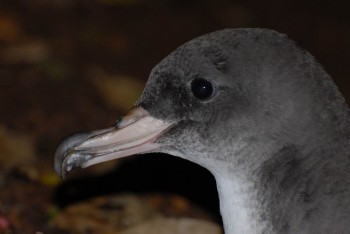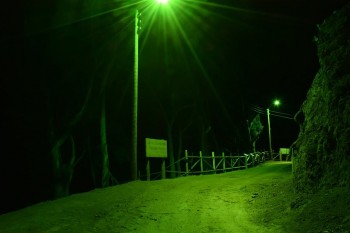Most burrowing petrels and shearwaters visit and fledge from their burrows in the hours of darkness. Those species that breed on inhabited islands are susceptible to becoming disoriented and being downed by bright lights at night in urban areas– as has been reported regularly in ACAP Latest News (click here).
The recently ACAP-listed Pink-footed Shearwater or Fardela Blanca Puffinus [Ardenna] creatopus is deleteriously affected by light pollution at its breeding sites on Chile’s Juan Fernández Islands. Shearwaters collide with buildings and other infrastructure on misty nights in the town of San Juan Bautista on Robinson Crusoe Island. Downed birds are then vulnerable to domestic dogs and cats - as recently reported by Oikonos Ecosystem Knowledge on its Facebook page (click here).

Pink-footed Shearwater, photograph by Peter Hodum
In 2011 street lights were changed from white to red in the town in an attempt to reduce shearwater downings. At the end of the 2014 a new change to green lights was made, which appear more efficient in reducing collisions. It is planned to install more green lights this year.

Green lighting, photograph courtesy of Oikonos Ecosystem Knowledge
Support for reducing the effects of light pollution on Pink-footed Shearwaters has come from the American Bird Conservancy, the municipality of Juan Fernandez and Oikonos Ecosystem Knowledge.
Green lights have been tried in at least two other situations to reduce seabird collisions at night (click here).
John Cooper, ACAP Information Officer, 20 June 2105

 English
English  Français
Français  Español
Español